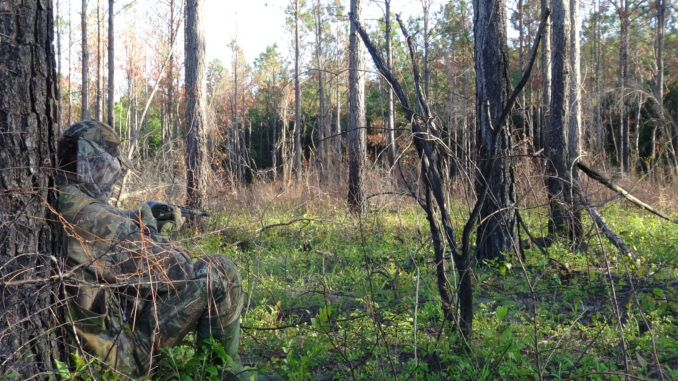
Cover more ground, make louder calls to strike up lonesome toms
The second week in North Carolina’s turkey season has come and gone. And in most areas of South Carolina, hunters have been in the woods for better than three weeks, with only a few days left.
Birds have been called to and called at enough that they can probably tell when you switch out diaphragm calls in your mouth. Don’t hesitate sanding or roughing up a different slate or chalk down the paddle of a different box.
So how does a modern turkey hunter battle smart, pressured birds as the season wanes?
Two expert North Carolina hunters have the same two prescriptions for sending a lethal does of copper-plated No. 4s in the direction of a big gobbler. Be patient, and hunt later in the day.
“Stay in the woods and be patient,” said Marshall Collette of Greensboro, a pro-staff member for Mossy Oak camouflage and Quaker Boy calls. “Some of your best hunting is going to be from 9 a.m. until noon or later. By then, the hens have gone to setting and they go away from the gobblers.
“Gobblers will be by themselves after mid-morning, and they’ll gobble. And they’ll come to you — some of them.”
Mitchell Johnson of Purlear, the owner of Dead End Game Calls, said he’s killed more birds between 10 a.m. and 1 p.m., especially when more and more hens go to sitting on their nests — often later in the season.
Patience is the name of the game for late season hunting
“You need patience, a lot of patience, and the more property you can cover, the better off you are,” Johnson said. “You’re trying to find that hot bird after the hens go to sitting. If you can strike one up, you have a better chance of killing him — especially when the season gets later.”
Collette said he’s not exactly running-and-gunning when mid-morning arrives. But he’s covering ground — with a plan.
“I ease around in the woods and call. I’ll call every 100 yards or so,” he said. “I’ll blow a crow call, run a box call, real excited. I always sit down before I call, because he might be close. If he gobbles, get ready. Most of the time, I’ll be calling with a box call or glass, something that will reach out to them. You have a little more foliage than normal in the woods this year. And so it’s not gonna hurt to call a little louder.”
Johnson likes to hunt close to fields in the afternoon, and he will try to get in their paths when they return to roosting areas in the last couple of hours of daylight.
“I like getting close to fields in the afternoon, especially places I’ve seen them strut,” he said. “I like to use decoys in fields. If I’m in the woods and I’m videoing a hunt, I’ll put out decoys, but if I’m just hunting, I won’t use a decoy. If you’re in the woods, he’s probably going to be in range when you first see him, and when he comes over a little rise and he’s right on top of that decoy, sometimes that can bother him.”





Be the first to comment